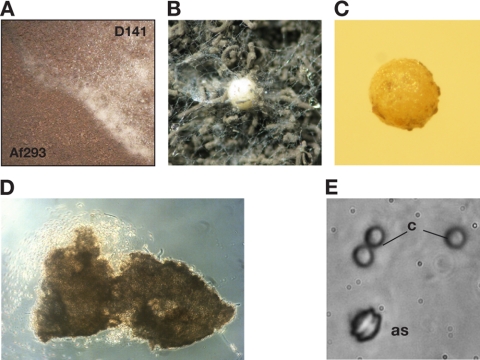Fig. 1.
Cleistothecium development and ascosporogenesis by crossing of unrelated clinical isolates of A. fumigatus. (A) Section from the crossing plate with clinical isolates D141 (MAT1-1) and Af293 (MAT1-2) on oatmeal agar. (B) These strains of opposite mating types develop a cotton-like barrage zone, in which cleistothecia develop upon further incubation. (C to E) From mature fruiting bodies (C), ascospores can be released by squeezing (D), which results in a characteristic appearance with two equatorial crests (E); for comparison, conidia (c) are shown beside one ascospore (as).

